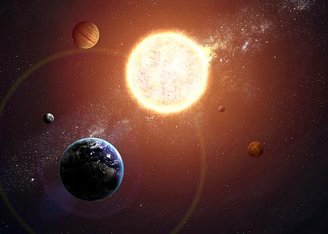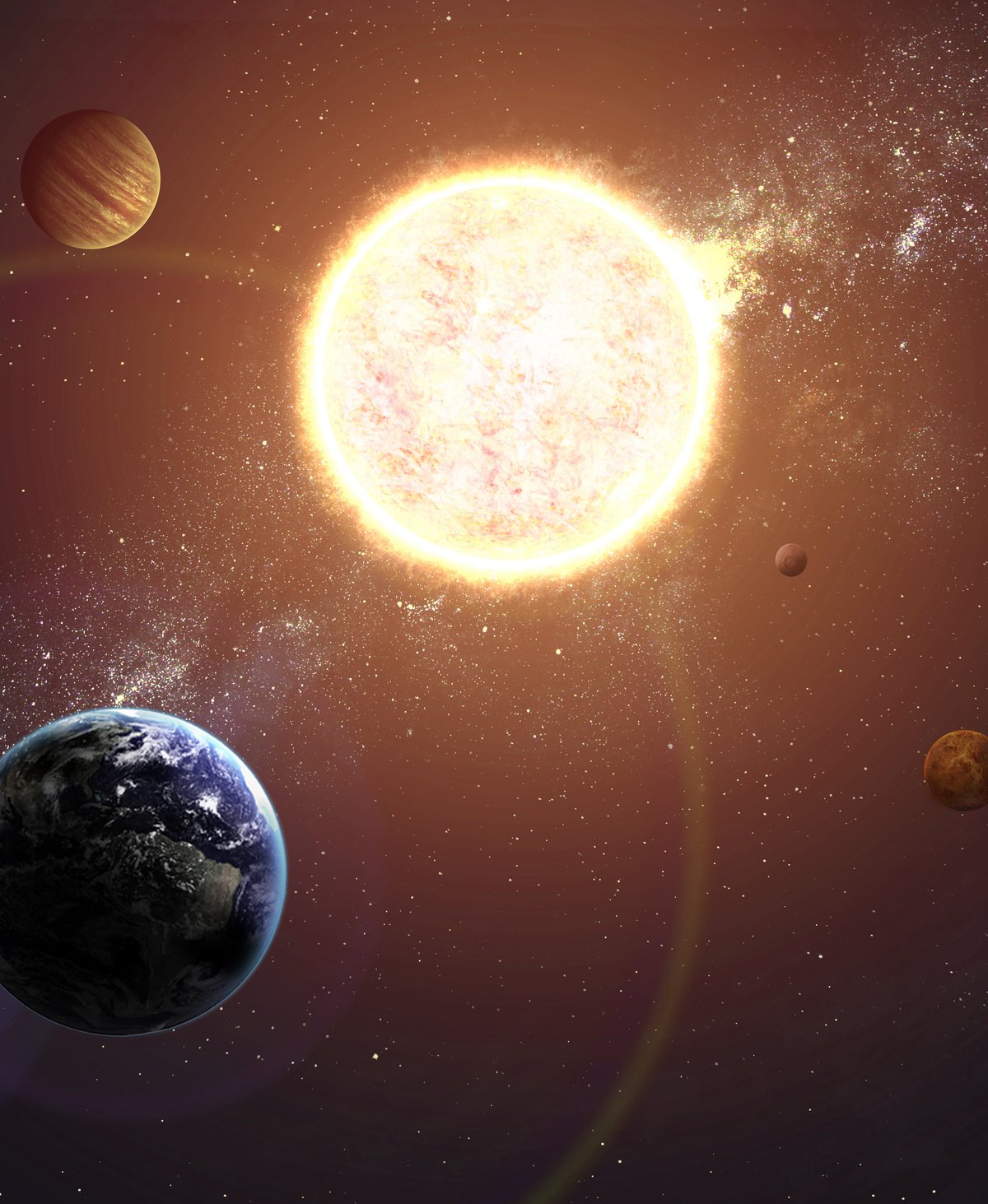According to measurements from existing instruments, Science says that the solar system was born about 4.6 billion years ago. Although this is not the precise moment of our system's birth, the story begins a little earlier. It was at the beginning of everything that the Big Bang, about 13.8 billion years ago, formed the universe we know and enabled the evolution of the Sun, Earth, and other celestial bodies in the universe.
The formation of the solar system began when the molecular cloud underwent a major transformation. The reaction led to the formation of a protostar that became the Sun, the star responsible for keeping Earth habitable. And allow for some terrestrial features that we know.
Since the beginning of everything, the solar system has been in a much quieter period, and cosmic objects falling to Earth are no longer a big problem – despite this, some meteorites still pose a threat to our planet. Since then, the Earth has made billions of revolutions around it. But what about the sun?
“The Sun’s gravity holds the Solar System together, keeping everything—from the largest planets to the smallest debris particles—in orbit. The contact and interactions between the Sun and Earth determine the seasons, ocean currents, weather, climate, radiation belts, and aurora borealis. Although they are special to us, There are billions of stars like our Sun scattered throughout the Milky Way Galaxy, explains the US National Aeronautics and Space Administration (NASA).
The fact is that the Earth is moving quickly through space and we do not even notice this movement. The strangest thing is that it is not only the Earth that moves; The system's main star also orbits the Milky Way. After all, how many revolutions has the Sun completed around the Milky Way?
The sun's orbits in the Milky Way
Although science knows much of the history of the solar system, Understanding how many times a star has orbited the Milky Way is not easy. In the case of Earth, understanding the orbit is simpler because it is relatively easy to calculate the planet's stable, shortest path, compared to the long, unstable motion of the Sun in our galaxy.
The current speed of the movement of the solar structure is about 720 thousand kilometers per hour, which allows a complete revolution around the Milky Way Galaxy between approximately 220 million and 230 million years. Given simpler mathematics, in the 4.6 billion years since its initial formation, The Sun may have completed only 20 to 21 orbits around the galaxy.
“The Sun orbits the center of the Milky Way Galaxy, carrying with it planets, asteroids, comets and other objects into our solar system. Our solar system moves at an average speed of 450,000 miles per hour (720,000 kilometers per hour). But even at this speed, It takes about 230 million years for the Sun to complete a full orbit around the Milky Way“, NASA describes in a publication about the sun.

The Earth's rotation has undergone some changes until it reached its current state, but these changes are not that important considering the billions of years that have passed since its formation. Since it takes one year for the Earth's orbit to complete one revolution around the Sun, Scientists estimate that our planet has already completed about 4.5 billion cycles.
The Sun's motion around the Milky Way may have changed several times over these billions of years, so it is not easy to determine the exact number of cycles. In a message to the site Live sciencesAstrophysicist Victor DiBattista, from the University of Central Lancashire (UK), stated that the Sun should not be shining where it is currently located. The star was likely born near the center of the Milky Way, about 16,300 light-years from the galactic core.
The star's orbital period was also much shorter during its early formation, perhaps taking 125 million years to complete one orbit. In other words, the number of orbits may be larger than the stated estimate, but there is still no accurate result on this issue.
Did you like the content? So, stay updated with more curiosities about astronomy here TecMundo. If you wish, take the opportunity to find out what the future of the Milky Way will be like.

“Wannabe internet buff. Future teen idol. Hardcore zombie guru. Gamer. Avid creator. Entrepreneur. Bacon ninja.”

